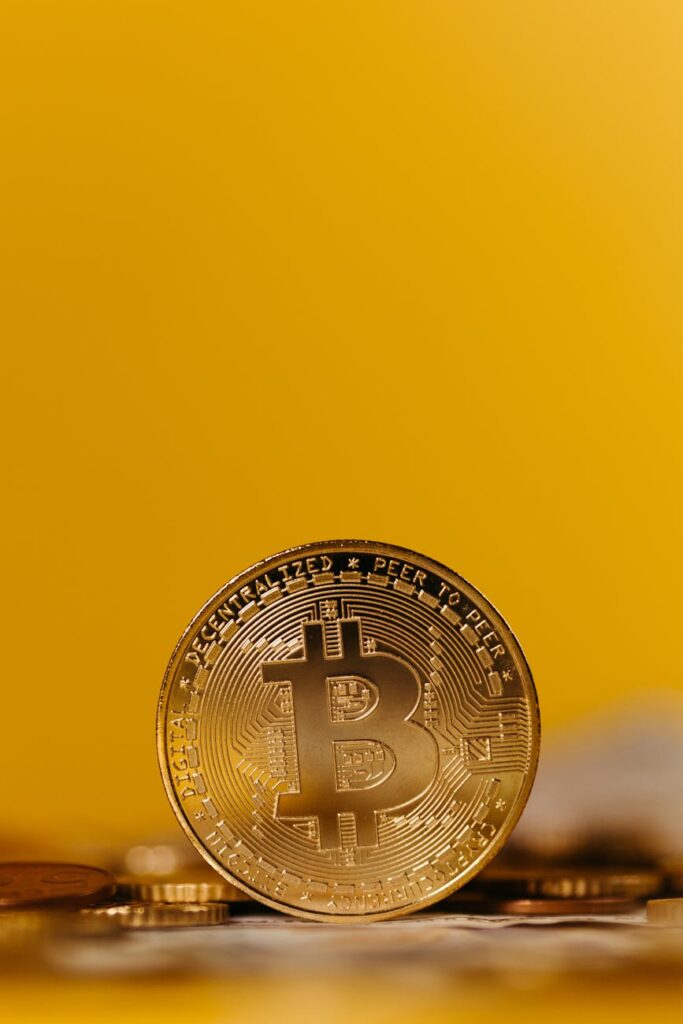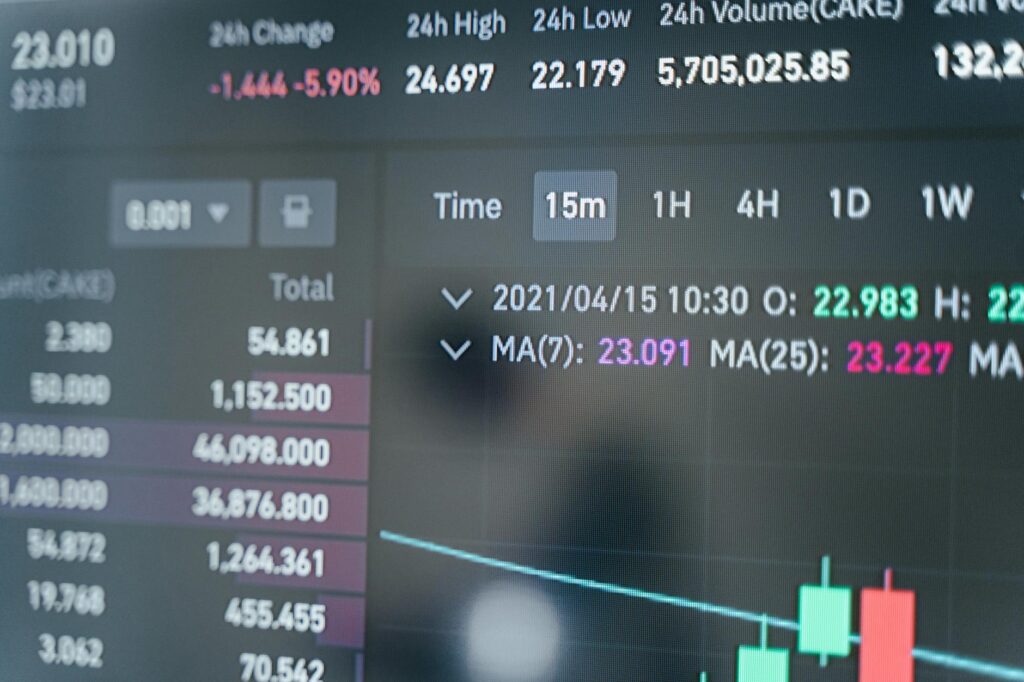How Cryptocurrency is Providing an Escape from Hyperinflation in Certain Countries.
Imagine your life savings. Everything you’ve worked for, tucked away for a rainy day, for your kids’ education, for your retirement. Now imagine watching it evaporate. Not because of a bad investment, but because the money in your bank account is becoming worthless, day by day, hour by hour. The prices at the grocery store double overnight. A loaf of bread costs a wheelbarrow full of cash. This isn’t a dystopian novel. It’s the brutal reality of hyperinflation. For millions living in countries like Venezuela, Argentina, Zimbabwe, and others, this economic nightmare is their daily life. In this chaotic landscape, a new, digital lifeline has emerged. The rise of cryptocurrency hyperinflation solutions is not just a tech trend; it’s a desperate, and often effective, fight for financial survival.
Key Takeaways
- Hyperinflation destroys the value of national currencies, making citizens’ savings worthless almost overnight.
- Traditional havens like the US dollar are often inaccessible due to strict government capital controls.
- Cryptocurrencies like Bitcoin offer a decentralized, seizure-resistant store of value with a fixed supply, acting as a hedge against currency printing.
- Stablecoins (like USDT or USDC) provide the stability of the US dollar without needing a traditional bank account, making them perfect for daily savings and transactions.
- Peer-to-peer (P2P) exchanges are the crucial link, allowing people to trade their devaluing local currency for crypto directly with others.
- While a powerful tool, crypto comes with significant risks, including extreme volatility, scams, and regulatory uncertainty.
What Does Hyperinflation Actually Look Like?
It’s easy to hear the term “hyperinflation” and just think of it as “prices going up really fast.” But that doesn’t capture the sheer terror of it. It’s a complete breakdown of trust in a nation’s money. It’s when a government, often buried in debt or crippled by sanctions, starts printing money with reckless abandon to pay its bills. More money chasing the same amount of goods means each unit of that money is worth less. And less. And less.
Think of it like this: your salary stays the same, but on Monday, a coffee costs 100 pesos. By Friday, that same coffee is 500 pesos. Your paycheck, received at the beginning of the month, is practically worthless by the end of it. People rush to spend their money the second they get it, buying anything tangible—food, supplies, goods—before its value dissolves. Saving becomes impossible. Planning for the future becomes a joke. The economy grinds to a halt, and society begins to fray at the edges. This isn’t ancient history; it’s happening right now.
The Traditional “Solutions” and Why They Fall Short
When your local currency is on fire, the logical move is to jump to a more stable one. For decades, that has meant the US dollar. In countries facing hyperinflation, a thriving black market for physical US dollars often emerges. People will do anything to trade their rapidly devaluing pesos, bolívars, or zimdollars for crisp greenbacks.
But governments are wise to this. To stop the exodus from their currency, they implement draconian measures called capital controls. They might:
- Severely limit the amount of foreign currency an individual can legally buy.
- Make it illegal to trade currency outside of the (often wildly unrealistic) official government exchange rate.
- Restrict international bank transfers.
This forces citizens into a corner. They can either watch their savings vanish or risk dealing in a dangerous physical black market. Storing large amounts of cash under a mattress is neither safe nor practical. For the average person, the safest harbor is locked away.

Enter Digital Assets: How Cryptocurrency Fights Hyperinflation
This is where cryptocurrency crashes the party. It offers a way to bypass the broken local financial system and the government’s capital controls. It’s a parallel economy, built on the internet, accessible to anyone with a smartphone. It provides options that simply didn’t exist a decade ago. But how, exactly?
Bitcoin: The Decentralized Store of Value
Bitcoin is often called “digital gold,” and for good reason. Its most powerful feature in the context of cryptocurrency hyperinflation is its absolute scarcity. There will only ever be 21 million Bitcoin. Ever. No government, no central bank, no CEO can decide to create more. This is written into its core code.
Contrast that with a national currency, which a central bank can print into oblivion. Bitcoin’s fixed supply makes it a powerful store of value. It’s a hedge against the very government mismanagement that causes hyperinflation in the first place. Furthermore, it’s decentralized. No one can freeze your Bitcoin wallet or seize your assets without your private keys. It offers true financial sovereignty. For someone whose government has defaulted on its promises, that is an incredibly powerful proposition.
“In a world where central banks can print unlimited amounts of money, a digitally scarce, borderless asset that cannot be censored or seized is not just an innovation—it’s a necessity for millions.”
Stablecoins: The Everyday Digital Dollar
While Bitcoin is a great long-term store of value, its price can be wildly volatile. You don’t want your grocery money to be worth 20% less by the time you get to the checkout line. This is where stablecoins come in. They are the workhorses of the crypto escape route.
A stablecoin is a type of cryptocurrency designed to hold a steady value. The most popular ones, like Tether (USDT) and USD Coin (USDC), are pegged 1:1 to the US dollar. For every 1 USDT in circulation, there is (in theory) $1 held in reserve by the company that issues it. This gives you the stability of the dollar combined with the benefits of crypto:
- Accessibility: You can hold digital dollars on your phone without a US bank account.
- Transferability: You can send them anywhere in the world in minutes for a tiny fee, bypassing slow and expensive legacy systems.
- Censorship-Resistance: It’s much harder for a government to block a crypto transaction than a bank transfer.
For many in Argentina or Turkey, stablecoins are their primary savings vehicle. They convert their local salary into USDT the moment they receive it, preserving its value against daily inflation.
Peer-to-Peer (P2P) Markets: The Real-World Connection
So, you have devaluing pesos and you want digital dollars (USDT). How do you make the trade? You can’t just walk into a bank. The answer is a Peer-to-Peer (P2P) marketplace, often found on major crypto exchanges like Binance or KuCoin. Here’s how it works in a simplified way:
- Seller lists an ad: Someone who wants to sell their USDT for local currency creates an ad, specifying their price and the local payment methods they accept (e.g., a specific bank transfer).
- Buyer finds the ad: You, wanting to buy USDT, browse the listings and find one that works for you. You initiate a trade.
- Crypto is held in escrow: The P2P platform automatically locks the seller’s USDT in a secure holding account (escrow).
- Buyer sends payment: You send the agreed-upon amount of local currency directly to the seller using the specified payment method.
- Seller confirms and releases: Once the seller confirms they’ve received your payment, they click a button, and the platform releases the USDT from escrow into your crypto wallet.
This entire process happens without the money ever touching a traditional international finance system. It’s a direct, person-to-person trade facilitated and secured by the P2P platform. It’s the engine that powers this entire escape hatch.
Real-World Stories: Crypto in Action
This isn’t just theory. It’s happening at scale.
Venezuela: Survival on the Blockchain
Venezuela is the poster child for modern hyperinflation. The bolívar became so worthless that people were weighing stacks of cash instead of counting them. The government’s attempt to force a state-run crypto, the Petro, was a spectacular failure. In the vacuum, citizens flocked to Bitcoin, Dash, and stablecoins. They use it for everything: buying food from a neighboring country, receiving remittances from family abroad without the government taking a huge cut, and simply trying to hold onto any value they could.
Argentina: A Nation Hedging with Stablecoins
Argentina has been battling chronic high inflation for decades. The population has become incredibly savvy at navigating economic instability. For years, the go-to was the “dólar blue,” the black market for physical US dollars. Today, a new generation, particularly tech workers and freelancers who earn in foreign currency, has leapfrogged to crypto. They receive payment in USDC or USDT, completely bypassing the Argentine banking system and its strict controls. They then use P2P markets to sell small amounts back into pesos as needed for daily expenses, keeping the bulk of their wealth safe in digital dollars.
The Not-So-Hidden Risks and Challenges
Of course, this escape route is not a yellow brick road. It’s fraught with its own dangers. It’s crucial to acknowledge that for every success story, there’s a cautionary tale.
- Extreme Volatility: While great for hedging, Bitcoin’s value can plummet dramatically in a short period. Someone escaping 100% annual inflation might not be prepared for a 50% drop in their Bitcoin holdings.
- Scams and Security: The crypto world is rife with scams, phishing attacks, and hacks. A single mistake—clicking a bad link, sharing your private keys—can lead to a total loss of funds with no recourse. You are your own bank, which is both empowering and terrifying.
- Technical and Educational Barriers: Using crypto requires a decent smartphone, reliable internet access, and a degree of technical literacy. These are luxuries that not everyone in a collapsing economy has.
- Regulatory Uncertainty: Governments don’t like losing control. They can, and do, crack down on crypto exchanges, block websites, or create hostile regulations that make it difficult to cash out back into the local economy.

The Future of Money in Volatile Economies
Is cryptocurrency the ultimate savior for countries with failed monetary policies? Probably not. It’s not a magic bullet that can fix corrupt governments or broken economies. It’s a tool. A very powerful one.
What we’re seeing is a massive, real-time experiment in financial sovereignty. For the first time in history, individuals have a viable way to opt-out of a monetary system they don’t trust. It’s a check on power. The very existence of this escape hatch might one day force governments to be more responsible with their own currencies. Or, it could lead to a future where state-issued money coexists with a global, digital, permissionless layer of value transfer.
Conclusion
For those of us living in countries with stable currencies, cryptocurrency can feel like a speculative investment, a tech curiosity, or even a solution in search of a problem. But for millions of people watching their world dissolve into the chaos of hyperinflation, it’s none of those things. It’s a lifeboat. It’s a way to preserve the value of their labor, to feed their families, to receive money from loved ones, and to hold onto a small piece of the future. It’s messy, risky, and complicated, but when the only other option is to stand by and watch everything you’ve built turn to dust, it’s a risk many are increasingly willing to take.


